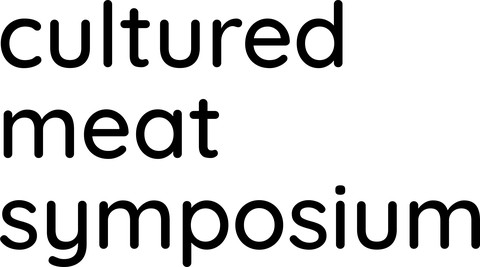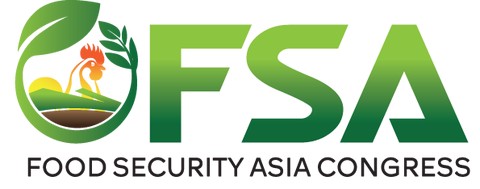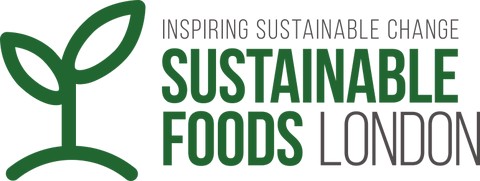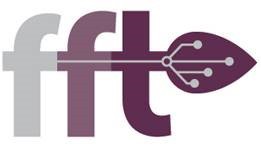All You Can Eat, Just Order the Meat
November 3, 2021 - 18 min read
This essay is first-place winner of the Student Essay Contest 2021. Eva Koffeman graduated from the University of Amsterdam in August 2021 with an MBA in Consumer Marketing.
Less meat, less heat. It is becoming increasingly recognized and proven that a reduction of meat consumption would be extremely beneficial to the climate, food security, animal welfare, the environment, biodiversity, and global health. Notwithstanding these essential advantages, meat retains its substantial share in contemporary Western diets. The average Dutch person consumes meat 6 days a week (RIVM, 2020). The persistence of this habit can be explained by the fact that people believe eating meat is natural, normal, necessary and nice (Piazza et al., 2015). Even though vegetarianism has gradually become more popular and accepted (Leitzmann, 2014), meat consumption remains the social norm. At the majority of organized dinners and events, meat is the default menu option. In most cases, vegetarians are asked to indicate their preferences for an alternative plant-based menu in advance, so that the organizers can make sure vegetarian options will be served at the occasion, too. This procedure can influence the choices that people make, as people have a tendency to stick with the given default option (Dinner, Johnson & Goldstein, 2011). In order to reduce meat consumption, Dutch senator prof Henriette Prast proposed to reverse this common default by making plant based meals the default option at organized dinners, and enabling meat- or fish lovers to request a non-vegetarian alternative dish in case they so desire (e.g. Prast, 2009). When this design was tested in a scientific experiment, it led much more people to eat vegetarian at the occasion than when the default menu contained meat and dairy (Hansen, Schilling & Malthesen, 2019). Given the societal importance of this finding, scientific replications of the effect are crucial. Yet insight in these mechanisms could be part of the solution to make meat more obsolete.
Default effects
The default effect refers to “the tendency to stick with the option that takes effect if one does not make an explicit choice” (Li & Chapman, 2013). A considerable quantity of scientific studies has been conducted on this effect. For example, there is a substantial body of research comparing opt-in and opt-out organ donation systems. The results are consistent: opt-out systems lead to much more organ donors than opt-in systems (e.g. Davidai, Gilovich & Ross, 2012; Johnson & Goldstein, 2003; McKenzie, Liersch & Finkelstein, 2006). Other examples of areas in which default effects have been investigated are retirement program designs (Madrian & Shea, 2001) and lighting product choices (Dinner, Johnson & Goldstein, 2011). The participants in these studies were shown to opt for the default significantly more often than for the alternative option. Similar effects have been found in the context of food consumption, which has important societal implications as the use of vegan defaults has the potential to significantly reduce meat and dairy consumption.
The default effect is an example of irrational decision-making, as it illustrates a situation in which people do not decide according to their own best interest but are rather affected by a somewhat arbitrary external stimulus – the default. One potential explanation for this effect is that when people are faced with too many decisions, they tend to rely on simple heuristics to make their decision (Herman et al., 2009).
Several studies have examined various specific heuristics that may explain the default effect. People may perceive defaults as recommendations or suggestions from the policymakers or organization that set them. This impression has also been referred to as implied endorsement (McKenzie et al., 2006). In addition, sticking with the default requires less effort for the decision maker (Samuelson & Zeckhauser, 1988). After all, it prevents the individual from having to evaluate the available options. Finally, default options can influence perceived social norms, as Everett et al. (2015) found that defaults are perceived as socially normative options.
Effort
Individuals have to make approximately 200 food choices each day (Novak & Brownell, 2011). We have to decide when we eat, where we eat, what we eat, and how much we eat. An overburden of decisions leads people to simplify the decision-making process. Therefore, it seems likely that a default menu option offers a tempting choice, as it exempts people from having to decide. Especially if participants feel like it is too much effort to switch to the alternative menu option, a significant proportion of them will stick with the default menu option regardless of the ingredients of this menu, as it discards the need for option evaluation. Results will likely not apply to participants with strong preferences such as vegans or meat lovers, defaults are unlikely to be influential for people with strong preexisting attitudes (Vetter & Kutzner, 2016). Nevertheless, it is expected that overall the default effect should be stronger when the effort required to switch to the alternative menu option is high.
The importance of effort in food contexts has also been illustrated by the “proximity effect”, which refers to the finding that placing snack-food further away from individuals decreases their consumption of that food (Maas, de Ridder, de Vet & de Wit, 2012). The healthy option should be easier to obtain than the unhealthy option.
Social norms
Another reason for the appeal of default options is that people may interpret the default as an indication of what others choose. This suggests that in my experiment, the default menu option will be perceived as more socially normative than the non-default menu option.
The influence of social norms on food choice was also pointed out by Mollen, Rimal, Ruiter & Kok (2013), who found that meal choice is susceptible to printed social norm messages. The experiment looked at two types of social norms: descriptive norms and injunctive norms. Descriptive norms refer to the behavior that we observe among most others in our environment, whereas injunctive norms concern the behavior we believe is approved or disapproved of by others (Cialdini, Reno, Kallgren, 1990). Mollen et al. (2013) found that in an on-campus food court, a poster describing a healthy descriptive norm positively predicted healthy food choices. When the poster read a healthy injunctive norm, it did not significantly improve food choices. In line with these findings, it has been proposed that injunctive norms are less important in quick food decisions
Christie & Chen (2018) found that people have a tendency to order dishes that other people choose as well. Interestingly, this study looked specifically at vegetarian and non-vegetarian lunch options. The results showed that participants frequently mimicked the order placed by the person ahead of them in line, regardless of whether this person ordered a vegetarian or a non-vegetarian meal. The participants conformed to the norm they observed in front of them. Choosing a plant based menu will then no longer deviate from the social norm. Therefore, it is expected that the default being perceived as socially normative will subsequently increase the likelihood of that food option being chosen.
Current study
My experiment was centered around the following research question: “What is the effect of having non-vegetarian compared to plant based meals as the default menu option at organized dinners on meat consumption, and how can this effect be explained?”. It bridged a gap in the literature by contributing empirical findings concerning causes of default effects in food contexts in three ways. It replicates default effects in food choice, provides a causal test of the role of effort in default effects on food choice, and tests the role of social norms in this process. In addition to this scientific value, this specific research area also has societal relevance as it provides empirical evidence on a potential strategy to stimulate the necessary reduction of meat consumption.
Methods
Participants
The participants were recruited from an online test panel of over 65,000 members who voluntarily subscribed to the panel to share their personal experiences, opinions and judgments about products and services. A total of 23,565 people participated in the experiment that was completed online (52.1% female). Age was provided as a categorical variable ranging from ‘younger than 18’ to ‘older than 66’, with intervals of 10 years. More than three quarters of the participants was 56 or older (76.1%). The mode age category was ‘older than 66’. Almost half of the sample was employed (48.5%), whereas 37.1% was retired and 14.4% was unemployed.
Experimental Manipulation
The experiment had a 2 (default: meat vs. vegetarian) by 2 (effort: high vs. low) full-factorial between-subject design. Participants were randomly assigned to one of these four conditions. In all conditions, participants were asked to imagine the same scenario. They would receive an e-mail from a current or former employer which included an invitation to an annual staff dinner at which the company’s performance throughout the past year would be reviewed, and the 40th anniversary of the company would be celebrated. In order to make sure retired participants would feel included too, the email invited former colleagues to the event as well. The part of the e-mail text including information about the date, location and program of the evening was identical across conditions. The e-mails differed between conditions in two aspects. First of all, each email announced a default menu option, which, depending on the condition the participant was in, was either a meat menu (meat default condition) or a vegetarian menu (vegetarian default condition). Everyone at the dinner would be served the same menu, except for the attendees that would indicate beforehand to prefer the alternative menu instead. Second, the invitations also varied with respect to the amount of effort required to switch to the alternative menu option. In the low effort condition, participants could request the alternative menu by merely clicking a link in the email. In the high effort condition, the email asked them to visit the company’s website, look for a form under the heading ‘staff dinner’, and to fill it out and submit it.
Findings
Overall, a significant main effect of default menu option was found, such that participants showed a tendency to stick with the default menu option regardless of what the default was. Presenting participants with a vegetarian default menu increased vegetarian choice from 21% to 52% compared to a meat default condition. This effect was partially mediated by descriptive social norms: the default menu option was perceived as being more popular than the alternative menu option, which led participants to opt for the default menu option themselves significantly more often.
The main effect found was consistent with previous literature on default effects (e.g. Johnson & Goldstein 2003; McKenzie, Liersch & Finkelstein 2006, Dinner, Johnson & Goldstein, 2011), as the default option was chosen significantly more often than the alternative option. Thereby, the findings confirm the existence of a default effect in food choice. The outcome indicates that a vegetarian default menu option provides an effective way to reduce meat consumption at organized dinners. It more than doubled the number of participants opting for the vegetarian menu. This suggests that practitioners can stimulate healthy and sustainable food choices merely by serving meat on request rather than by default. Introducing the vegetarian default menu in organizations would enable the implementation of this policy at a large scale. Depending on the dissemination of this measure, this could lead to a drastic reduction of meat consumption.
In fact, the current sample showed a tendency to stick with the default option when it was easy to request the alternative menu option, and to request the alternative option when it required a lot of effort. Perceived descriptive social norms mediated the relationship between default menu option and menu choice, whereas perceived injunctive social norms did not. This means that participants thought the default menu option would be chosen more frequently by others than the alternative menu option, which subsequently led participants to opt for the default themselves as well.
Conclusion
Because a reduction of meat consumption would be beneficial to a variety of areas such as global health and sustainability (Godfray et al., 2018), the current study investigated whether offering vegetarian menus by default at organized dinners could discourage people from choosing to eat meat. In an online experiment among 23,565 participants, a vegetarian default menu option increased the vegetarian choice from 21% to 52%. This effect of default menu option on food choice was partially mediated by descriptive social norms. Participants felt like the default menu option was chosen more often by others than the alternative menu option, which led them to opt for the default menu themselves too. The role of the effort of switching to the alternative option may be surprising and requires further investigation. In sum, these data suggest that offering a vegetarian instead of meat default menu option may be an effective and easy to implement way to reduce meat consumption at organized dinners.
References
Christie, C. D., & Chen, F. S. (2018). Vegetarian or meat? Food choice modeling of main dishes occurs outside of awareness. Appetite, 121, 50-54.
Cialdini, R. B., Reno, R. R., & Kallgren, C. A. (1990). A focus theory of normative conduct: recycling the concept of norms to reduce littering in public places*. Journal of personality and social psychology*, 58(6), 1015.
Davidai, S., Gilovich, T., & Ross, L. D. (2012). The meaning of default options for potential organ donors. Proceedings of the National Academy of Sciences, 109(38), 15201-15205.
Dinner, I., Johnson, E. J., Goldstein, D. G., & Liu, K. (2011). Partitioning default effects: why people choose not to choose. Journal of Experimental Psychology: Applied, 17(4), 332.
Doelman, J. C., Stehfest, E., Tabeau, A., & van Meijl, H. (2019). Making the Paris agreement climate targets consistent with food security objectives. Global Food Security, 23, 93-103.
Everett, J. A., Caviola, L., Kahane, G., Savulescu, J., & Faber, N. S. (2015). Doing good by doing nothing? The role of social norms in explaining default effects in altruistic contexts. European Journal of Social Psychology, 45(2), 230-241.
Godfray, H. C. J., Aveyard, P., Garnett, T., Hall, J. W., Key, T. J., Lorimer, J., ... & Jebb, S. A. (2018). Meat consumption, health, and the environment. Science, 361.
Hansen, P. G., Schilling, M., & Malthesen, M. S. (2019). Nudging healthy and sustainable food choices: three randomized controlled field experiments using a vegetarian lunch-default as a normative signal. Journal of Public Health, 1-6.
Herman, C. P., Roth, D. A., & Polivy, J. (2003). Effects of the presence of others on food intake: a normative interpretation. Psychological bulletin, 129(6), 873.
Johnson, E. J., & Goldstein, D. (2003). Do defaults save lives?. Science, 302 (5649), 1338-39.
Lally, P., Bartle, N., & Wardle, J. (2011). Social norms and diet in adolescents. Appetite, 57(3), 623-627.
Leitzmann, C. (2014). Vegetarian nutrition: past, present, future. The American Journal of Clinical Nutrition, 100, 496-502.
Li, M., & Chapman, G. B. (2013). Nudge to health: Harnessing decision research to promote health behavior. Social and Personality Psychology Compass, 7(3), 188.
Maas, J., de Ridder, D. T., de Vet, E., & De Wit, J. B. (2012). Do distant foods decrease intake? The effect of food accessibility on consumption. Psychology & Health, 27(sup2), 59-73.
Machovina, B., Feeley, K. J., & Ripple, W. J. (2015). Biodiversity conservation: The key is reducing meat consumption. Science of the Total Environment, 536, 419-431.
Madrian, B. C., & Shea, D. F. (2001). The power of suggestion: Inertia in 401 (k) participation and savings behavior. The Quarterly Journal of Economics, 116(4), 1149-1187.
McKenzie, C. R., Liersch, M. J., & Finkelstein, S. R. (2006). Recommendations implicit in policy defaults. Psychological Science, 17(5), 414-420.
Mollen, S., Rimal, R. N., Ruiter, R. A., & Kok, G. (2013). Healthy and unhealthy social norms and food selection. Findings from a field-experiment. Appetite, 65, 83-89.
Novak, N., & D Brownell, K. (2011). Taxation as prevention and as a treatment for obesity: the case of sugar-sweetened beverages. Current pharmaceutical design, 17(12), 1218.
Piazza, J., Ruby, M. B., Loughnan, S., Luong, M., Kulik, J., Watkins, H. M., & Seigerman, M. (2015). Rationalizing meat consumption. The 4Ns. Appetite, 91, 114-128.
Prast, H. (2009, October 29). “Vegetarisme moet de sociale norm worden, de vleeseter de uitzondering” Me Judice. Retrieved from https://www.mejudice.nl/artikelen/detail/vegetarisme-moet-de-sociale-norm-worden-de-vleeseter-de-uitzondering
RIVM. (2020). Consumptie van vlees in Nederland. Rijksinstituut voor Volksgezondheid en Milieu. https://www.rivm.nl/sites/default/files/2020-01/011834_FS%20Consumptie%20van%20vlees%20in%20NL_TG.pdf
Samuelson, W., & Zeckhauser, R. (1988). Status quo bias in decision making. Journal of risk and uncertainty, 1(1), 7-59.
Vetter, M., & Kutzner, F. (2016). Nudge me if you can-how defaults and attitude strength interact to change behavior. Comprehensive Results in Social Psychology, 1(1-3), 8-34.
Appendix A
Text of the stimulus emails used in the online experiment
Dear colleagues,
We are pleased to invite you to the annual staff dinner that will be held on June 15 at 7 pm in the orangery of restaurant De Posthoorn in Vriezenveen. As always, we will review our company’s performance throughout the past year while sharing a delicious meal. Our director will give a short presentation, after which there will be an opportunity to ask questions. Because this year also marks our 40th anniversary, we warmly welcome both current and former colleagues to celebrate with us.
[Condition-specific text; see Table A1.]
We hope that everyone (both current and former employees) will be present in large numbers. Keep in mind that we would like to eat outside if weather permits, so bring a jacket!
Parking is free but because of the limited parking space, carpooling with colleagues is appreciated. The location is also easily accessible by public transport. A bus stops outside the door and takes you to the station in five minutes.
Unless you let us know otherwise, we assume to see you there. We look forward to the evening!
Sincerely,
The events committee
Table A1. Condition-specific text in stimulus email
Condition
Text
1. Meat default menu + low effort of choosing the alternative option
During the meal, a meat menu will be served for everybody attending. If you prefer a vegetarian menu, we will gladly take this into account. In that case, the only thing you need to do is click the link below. Your answer will be recorded automatically.
I would like a vegetarian menu
2. Meat default menu + high effort of choosing the alternative option
During the meal, a meat menu will be served for everybody attending. If you prefer a vegetarian menu, we will gladly take this into account. In that case, we ask you to go to our website. Under the heading ‘staff dinner’, you will find a form that you can fill out and submit.
3. Vegetarian default menu + low effort of choosing the alternative option
During the meal, a vegetarian menu will be served for everybody attending. If you prefer a meat menu, we will gladly take this into account. In that case, the only thing you need to do is click the link below. Your answer will be recorded automatically.
I would like a meat menu
4. Vegetarian default menu + high effort of choosing the alternative option
During the meal, a vegetarian menu will be served for everybody attending. If you prefer a meat menu, we will gladly take this into account. In that case, we ask you to go to our website. Under the heading ‘staff dinner’, you will find a form that you can fill out and submit.
Appendix B
Full questionnaire used in the online experiment ** **
(Dependent variable measure) The email spoke about a default menu and an alternative menu. Think about how you would have reacted to this e-mail in real life. Which menu would you have had at the event?
o The default menu
o The alternative menu
(Distracting item) Do you think it is important that people are asked for their dietary wishes in invitation emails?
o Yes
o No
(Dietary pattern measure) On how many days did you eat meat in an average week over the last month? Think about breakfast, lunch, dinner and snacks.
o 0
o 1
o 2
o 3
o 4
o 5
o 6
o 7
(Dietary pattern measure) Which description best suits your dietary pattern?
o Meat- and fish eater
o Meat eater (no fish)
o Fish eater (no meat)
o Flexitarian (mostly vegetarian)
o Vegetarian (no meat nor fish)
o Flexi-vegan (mostly vegan)
o Vegan (no animal products at all)
(Distracting item) The email read that carpooling is appreciated due to the limited parking space. In the given situation, which type of transport would you likely use to go to the dinner?
o By car with colleagues
o By car on my own
o Public transport
o Something else
(Distracting item) The email said that the organization assumes you will attend the dinner unless you let them know otherwise. Do you think this is a pleasant way of being invited?
o Yes, it is fine that my presence is assumed
o No, I would rather be asked to sign up explicitly
o I don’t care
(Manipulation check default menu) Without scrolling back, do you remember what will be the default menu at the event?
o A meat menu
o A vegetarian menu
o A gluten free menu
o An organic menu
o I don’t know
(Manipulation check alternative menu) Without scrolling back, do you remember what alternative menu option you were offered?
o A meat menu
o A vegetarian menu
o A gluten free menu
o An organic menu
o I don’t know
o None
(Manipulation check effort) What did you think of the way the alternative option could be requested?
o Hard
o Complicated
o Easy to do
o I don’t know
(Distracting item) The email invited former colleagues as well. How welcome do you think former employees were at the event, in comparison to current colleagues?
o Less welcome than current colleagues
o Equally welcome as current colleagues
o More welcome than current colleagues
(Descriptive social norms) Of all the people taking part in this questionnaire, what proportion do you think will choose to have the vegetarian menu at this event?
[Enter a number between 0 and 100]
** **
To what extent do you agree with the following statements?
(Distracting item) “It is good that former employees are invited to this dinner too”
(strongly disagree | disagree | somewhat disagree | neutral | somewhat agree | agree | strongly agree)
(Manipulation check effort) “Switching to the alternative menu option required a lot of effort”
(strongly disagree | disagree | somewhat disagree | neutral | somewhat agree | agree | strongly agree)
(Engagement measure) “It was easy for me to imagine the given situation in the email”
(strongly disagree | disagree | somewhat disagree | neutral | somewhat agree | agree | strongly agree)
(Injunctive social norms) “Most people believe that others should eat vegetarian at this event”
(strongly disagree | disagree | somewhat disagree | neutral | somewhat agree | agree | strongly agree)


















